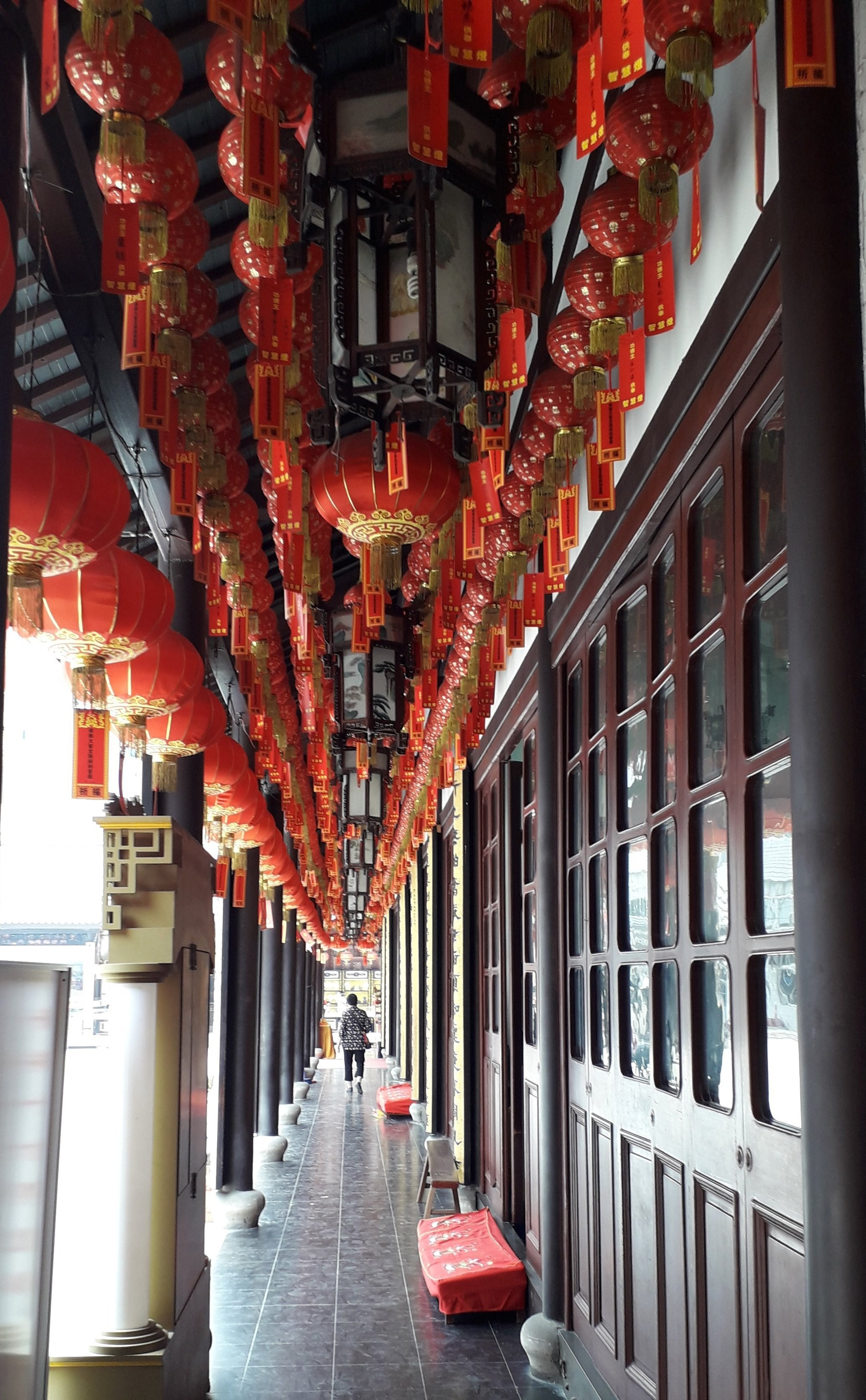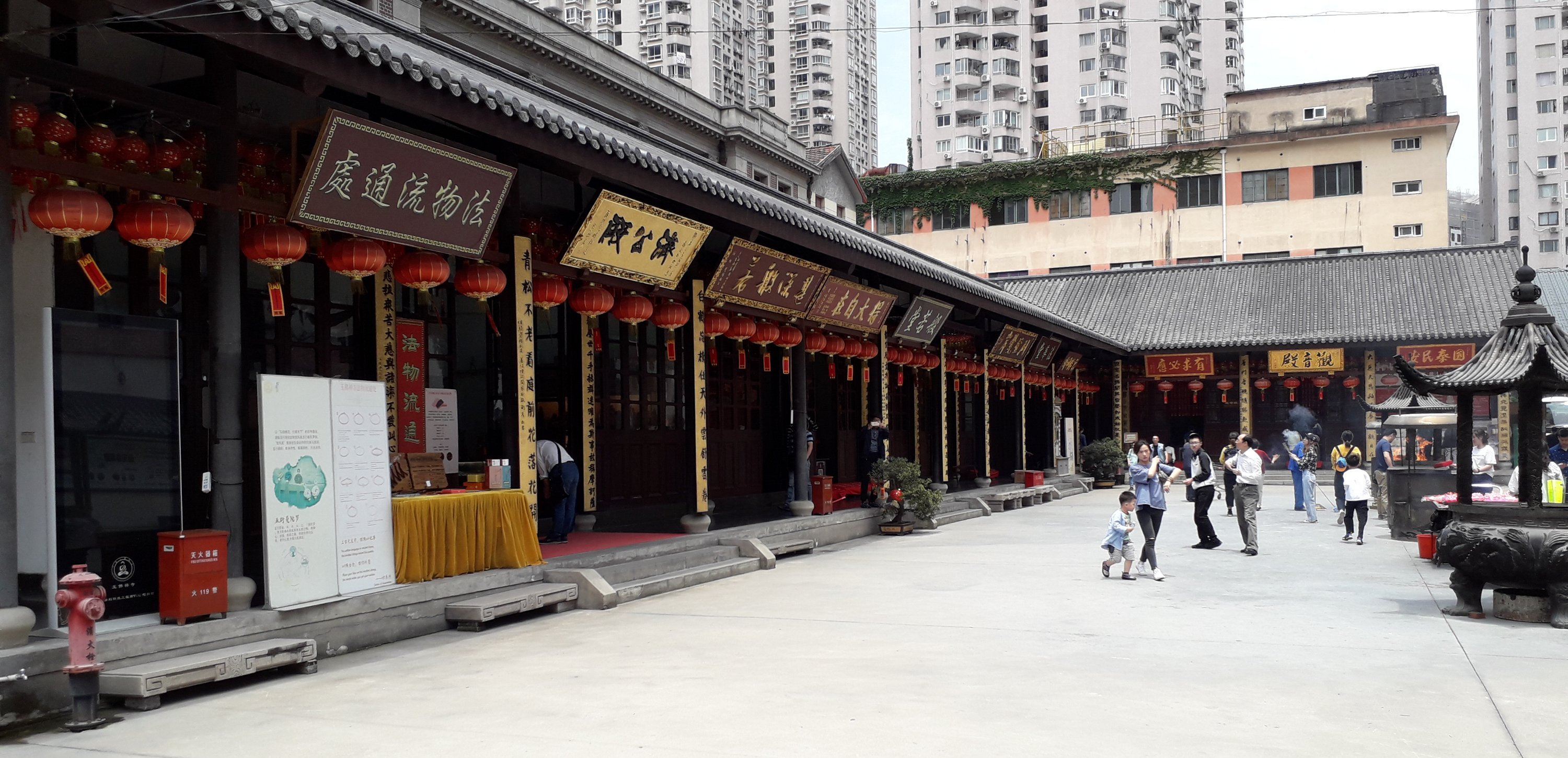Non amo Shanghai. Per questo, quando mi capita di passarci anche per qualche giorno vado alla ricerca dei suoi luoghi più spirituali, che mi allontanino un poco da tutto quello che sta fuori e con cui devo per forza di cose fare i conti. Recentemente ho quindi deciso di farmi una lunga camminata nelle vie della parte più affascinante della città, quelle dove ancora si trovano gli edifici di epoca coloniale miracolosamente sopravvissuti alle demolizioni selvagge degli anni Novanta del XX secolo. L’ho fatta per tornare al tempio del Buddha di Giada, il più famoso luogo buddista della città. Ecco qualche impressione.
La prima domanda che dovete porvi entrandoci è: ma dove si trova il Buddha di Giada? Non è per nulla una domanda banale perché se non chiedete o non avete una guida rischiate di non vederlo. La statua di origine indocinese portata qui da un monaco nel 1862 si trova infatti in un edificio piuttosto angusto e opprimente che si affaccia su un cortile nella parte posteriore del tempio. Entrando, vedrete bei padiglioni con tutta la canonica sfilata del pantheon buddista. Ogni cosa è lucida e tirata a nuovo, diversamente da come mi apparve la prima volta che ci venni nel 2002. Ma non fermatevi, proseguite lungo il lato sinistro del tempio, seguite il flusso per un passaggio assai poco invitante e vi ritroverete in un secondo spazio, quasi un tempio nel tempio.

I padiglioni bassi che circondano il cortile dove si trova il buddha sono occupati da negozi di souvenir che sembrano templi e da templi che sembrano negozi di souvenir. Al soffitto dei portici si trova una fitta rete di lanterne rosse che guida il percorso verso la angusta sala dove, nella penombra, è concesso per breve tempo di osservare il Buddha sereno ed elegante, come si usa nei paesi di scuola Theravada. Una balaustra che viene aperta solo per cerimonie e per gruppi di pellegrini che offrono ai monaci un obolo per preghiere speciali impedisce al visitatore di avvicinarsi a questa bella immagine scampata miracolosamente alla violenza della Rivoluzione Culturale.

Sebbene il cortile dove si trova la Sala del Buddha di Giada sia tutt’altro che affascinante dal punto di vista artistico, l’atmosfera che vi si respira è davvero particolare. Gruppi di turisti cinesi vi si affollano con il loro caratteristico e vociante affannarsi alle spalle di una guida dalla bandierina colorata. Saranno devoti? Saranno curiosi? Saranno qui perché lo vogliono o perché ce li hanno portati? Difficile dirlo quando si ha a che fare con la Cina dove ogni logica è particolare!

Nel tempio però vivono ancora una sessantina di monaci e non è difficile incontrarli. A me è capitato di assistere a una cerimonia “su richiesta” (non diversa dalle messe dedicate nelle nostre chiese) accompagnata da canti e suoni ritmici. Il tempio quindi è vissuto, di quel vissuto strano che si trova solo in Cina. Chiedi a un amico: ma sono davvero devoti visto che accendono incensi, si prostrano davanti agli altari, mostrano rispetto e devozione? Lui sorride e dice: ma no, è solo folklore! Un altro però non la pensa così e dice che davvero certe tradizioni si stanno riscoprendo. Chi avrà ragione? Credo che la verità stia nel mezzo. Come però ho scritto in un recente post sempre dedicato alla vita religiosa a Shanghai (vedi il link qui) sono soprattutto i giovani a essere attenti e rispettosi. Vorrà forse dire qualcosa?

Come ogni tempio cinese anche questo però ha angoli di grande bellezza ed armonia. La apprezzi ancor di più se alzi gli occhi e vedi attorno a te brutti palazzi che si ergono come quinte senza grazia attorno alla serena eleganza del tempio.

Tornerò ancora al Tempio del Buddha di Giada, acquisterò ancora gli incensi, me ne starò seduto per un’ora (se il mio timing me lo permetterà…) a osservarne la vita, i bruciatori di incensi, quelli che si prostrano e lo fanno con metodica regolarità davanti a ogni altare di ogni padiglione, i monaci con le tonache arancio. Fuori c’è la caotica Shanghai ma qui dentro non la si sente. Succede così in ogni luogo sacro di ogni città nel mondo. Sarò io che non voglio sentire oppure sarà una misteriosa e invisibile membrana energetica a isolarli dalla vita ordinaria?
OGNI ARTICOLO DIVENTA UN VIAGGIO! SE SEI INTERESSATO A ORGANIZZARE UN VIAGGIO SUI TEMI TRATTATI DA CITYPILGRIMBLOG LEGGI QUI

I don’t love Shanghai. That’s why, when it happens to spend a few days there, I go searching for spiritual places. What I search is a distance, a virtual empty space separating me from everything outside. So, recently I decided to take a long walk through the streets of the most fascinating part of the city, where there are still the colonial buildings that miraculously survived the wild demolitions of the Nineties. I wanted to return to the temple of the Jade Buddha, the most famous Buddhist place in the city. Here are some impressions.
The first question you have to ask when you enter is: where is the Jade Buddha? It’s not a trivial question at all, because if you don’t ask or don’t have a guide, you couldn’t find it. The statue of Indochinese origin, brought here by a monk in 1862, stands in a narrow and oppressive building, overlooking a courtyard at the back of the main temple. Upon entering, you will see beautiful pavilions with the entire parade of the canonical Buddhist pantheon. Everything is shiny and glided, unlike it was at my first visit here in 2002. Don’t stop, walk along the left side of the temple, follow the visitors passing through a very uninviting passage and you will find yourself in a second space, something like a temple in the temple.
The low pavilions surrounding the courtyard where the Jade Buddha is located are occupied by souvenir shops that look like temples and temples that look like souvenir shops. At the ceiling of the arcades you can see a pattern of red lanterns leading you to the narrow hall where, in the half-light, you can observe for a short time the serene and elegant Buddha, as is used in the Theravada school. A balustrade that is only opened for ceremonies prevents the visitor from approaching this beautiful image miraculously escaped the violence of the Cultural Revolution.
Although the courtyard where the Jade Buddha Hall is located is anything but fascinating, the atmosphere is quite special. Groups of Chinese tourists flock there with their characteristic bustle behind a colorful flagged guide. Will they be devoted? Will they be curious? Will they be here because they want to or because someone brought them? It’s hard to say in China where the logic is so particular!
There are still about sixty monks living in the temple and it’s not difficult to meet them. I happened to attend a ceremony “on request” (no different from the masses dedicated in our churches) accompanied by songs and rhythmic sounds. I asked a friend: are they really worshipping when they light incense, prostrate themselves in front of the altars, show respect and devotion? He smiles and says: oh no, it’s just folklore! Another, however, does not think so and says that really certain traditions are being rediscovered. Who will be right? I think the truth lies in the middle. But as I wrote in a recent post (see the link here) it is mainly young people who are attentive and respectful.
Like every Chinese temple, however, this one also has corners of great beauty and harmony. You will appreciate it even more if you raise your eyes and see around you ugly palaces that rise like graceless walls around the serene elegance of the temple.
I will return again to the Temple of the Jade Buddha, I will buy incense again, I will sit for an hour (if my timing will allow me…) to observe its life, the incense burners, those who prostrate themselves with methodical regularity in front of each altar of each pavilion, the monks with orange tunic. Outside, the chaotic Shanghai, but here you can’t feel it. That’s what happens in every sacred place in every city in the world. It’s my attitude that excludes them or there’s a mysterious and invisible energy membrane that isolates them from ordinary life?



